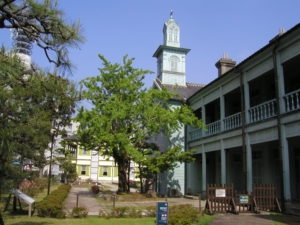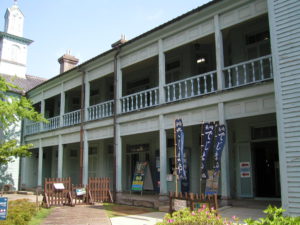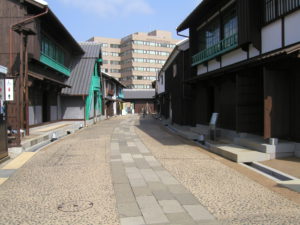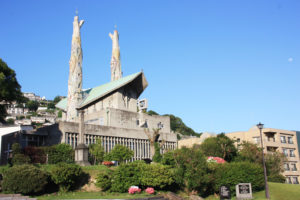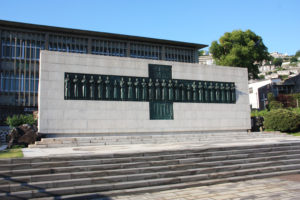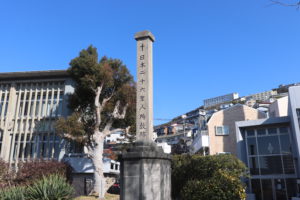St. Andrew’s Seminary at Dejima, in Nagasaki
After the ban on Christianity lifted in 1873, Burnside who was the British Church
Missionary created a cram school at his home to teach the English Bible.
In 1877, the school was moved to the Dejima English-Japanese School building
at Dejima, and St. Andrew’s Seminary was opened.
It was then used as the Seminary until 1886.
|
|
|
|
Amakusa Shiro Memorial Hall, in Amakusa
The museum is a Christian Pilgrimage site shows History of Christianity in Amakusa
and Shimabara Rebellion which was a peasant uprising agaist bakufu’s persecution
of Christians under the leadership of Amakusa Shiro in 1637.
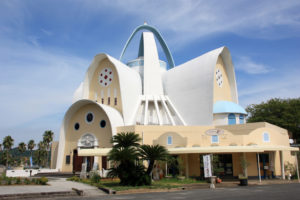 |
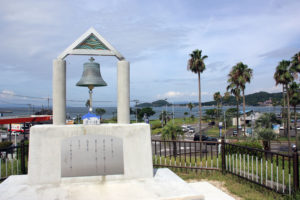 |
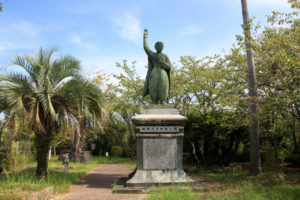 |
Endo Shusaku Literary Museum
The peaceful Sotome, the setting of Endo Shusaku’s novel Silence. Sotome area of Nagasaki
city has an abundance of natural beauty in its sea, mountains and rivers. It also is blessed with
a unique history and culture of Christianity. In particular, the area in which the Endo Shusaku
Literary Museum stands is known as the site of a Christian village, one of Endo’s most notable
work, Silence.
From the literary museum, there is a magnificent view. In a sweep of eye one can see sun as
it majestically sets over the sea of Goto, along with the Silence Literary Monument in Shitsu
Bunka Mura. Endo Shusaku and the Sotome area are linked through Silence ; this bond has
been built up starting from when Endo was writing the novel, and continues into the present day
with the construction of literary museum.
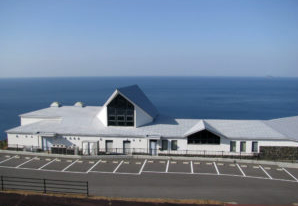 |
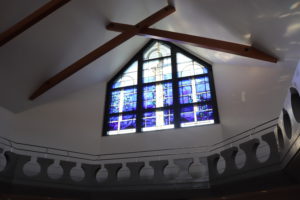 |
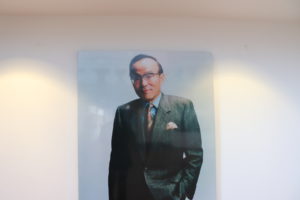 |
Following Endo Shusaku’s death, this Literary Museum was established thanks to kindness of
his family, and was filled with Endo’s persona belongings, mementoes, manuscripts, and his
extensive collection of books. The Museum exhibits trace the footsteps of Endo Shusaku as
one of Japan’s greatest writers of literature. In addition, it has facilities for collecting, preserving,
and exhibiting materials related to Endo’s public perusal and research, and operating as an
information center.
Note : Silence
Silence is a 1966 novel of theological fiction by author Endo Shusaku, published in English by
Peter Owen Publishers. It is the story of a Jesuit missionary sent to 17th century Japan, who
endures persecution in the time of Hidden Christians that followed the defeat of the Shimabara
Rebellion. The recipient of the 1966 Tanizaki Prize, it has been called “Endo’s supreme
achievement and “one of the twentieth century’s finest novels Written partly in the form of a letter
by its central character, the theme of a silent God who accompanies a believer in adversity was
greatly influenced by the Catholic Endō’s experience of religious discrimination in Japan, racism
in France, and a debilitating bout with tuberculosis.
The 26 Martyrs Museum
The 26 Martyrs Museum is dedicated to the 26 Christians who were executed here on
February 5, 1597. They included both foreign missionaries and Japanese laymen. Missionary
activities were prohibited at the time, and Japan’s ruler Toyotomi Hideyoshi staged the execution
as a warning. The monument is located in a small park on a hill not far from Nagasaki Station
and offers nice views over the city.
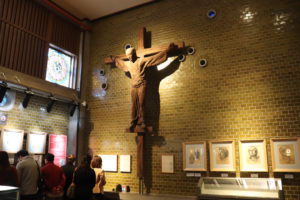 |
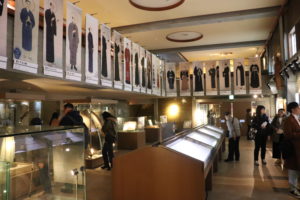 |
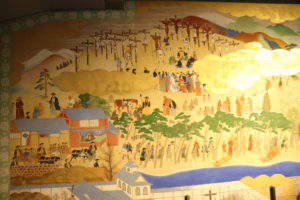 |
A straight red line runs from the Monument across the park’s plaza in the direction of the Oura
Cathedral on the opposite side of the city. Oura Cathedral is also dedicated to the 26 martyrs.
The museum behind the monument is devoted to the memory of the martyrs and to Christianity in
Japan in general. Its interior is reminiscent of a church with stained-glass windows, making for
atmospheric viewing of the exhibits. On display are artifacts related to Christianity in Japan,
including old documents, statues and jewelry.
Nishizaka Hill
Nishizaka Hill in Nagasaki is the place of Martyrdom of 26 Japanese Saints.
The 26 Martyrs of Japan were a group of Catholics who were executed by
crucifixion on February 5, 1597.
The Twenty-six Christians, including six foreign missionaries and three young boys, were arrested
in Kyoto and Osaka on the order of Toyotomi Hideyoshi, the National ruler, for preaching Christianity.
They were marched 800 km through the snow to Nagasaki and crucified in front of large crowd on
Nishizaka hill on Feb. 5, 1597.
Their martyrdom is especially significant in the history of the Catholic Church in Japan. In 1950,
Pope Pius XII designated this place as an official pilgrimage site for Catholics.
Pope John Paul II visited here in 1981, and Saint Teresa of Calcutta commonly known as Mother
Teresa visited in 1982.
Paulo Miki and 25 others were crucified for their belief in God on order of Toyotomi Hideyoshi.
The martyrs including four Spaniards, one from Goa, India, one Mexican and 20 Japanese
demonstrated their spiritual unity despite differences in races, ages and professions.
|
|
|
|
Hokohara martyrdom place in Omura
This is a place related to the Kori-kuzure incident in Omura in 1657 in which
a large number of hidden Christians were arrested.
As many as 608 Christians were arrested, making it a rare and major incident
in the history of Christian oppression.
411 Christians were beheaded, and 131 of them were martyred at Hokohara
martyrdom place.
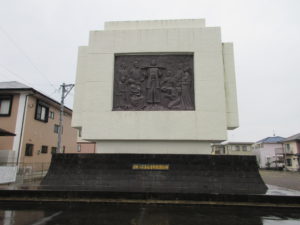 |
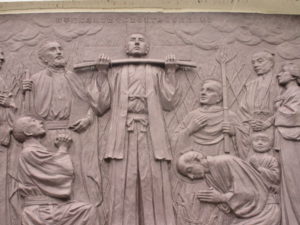 |
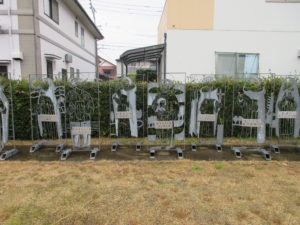 |
As a result of this incident, the Omura domain began implementing even stricter
policies prohibiting Christianity.
The believers have erected the monument to commemorate the martyrdom
at this location.
Nakae no Shima / Christian Pilgrimage site
Nakae no Shima is a Christian Pilgrimage site and is the UNESCO World Heritage site of
Hidden Chriatian Sites in the Nagasaki Region. Located two kilometers off the coast of
Hirado Island, Nakae no Shima is a small, uninhabited island where religious leaders
were executed during the persecution of Christians. The island is considered sacred,
and water collected there is used for baptism.
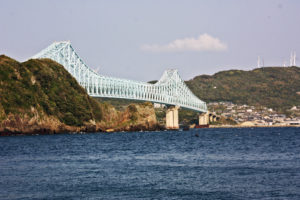 |
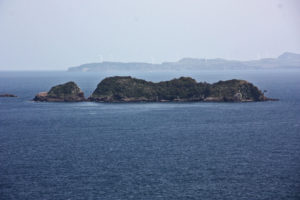 |
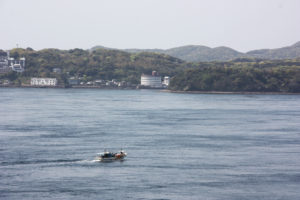 |
Unzen jigoku Martyrdom
When Matsukura Shigemasa became the new federal lord of Shimabara in 1616,
many people were Christians. Initially, he acquiesced in Christianity, because
he needed people’s cooperation to build Shimabara Castle.
However, this situation was known to Tokugawa Shogunate, and he strongly
commanded Christians in Shimabara to convert.
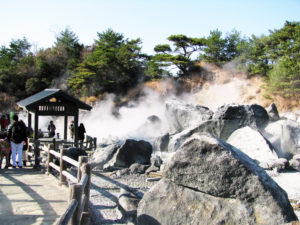 |
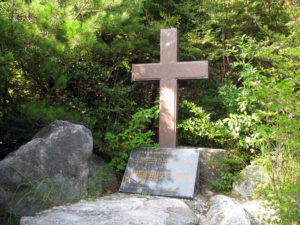 |
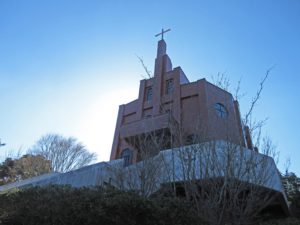 |
From 1627, Christians who did not convert were persecuted using the boiling water
of Unzen jigoku.
Many Christians were taken to this Unzen jigoku and martyred.
Unzen Church is dedicated to Father Antonio Ishida, a martyr of Unzen Hell, and
martyrdom festival is held every May.
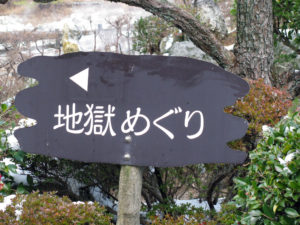 |
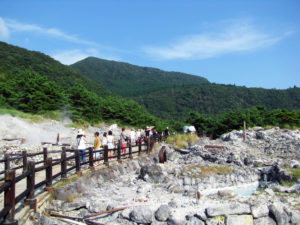 |
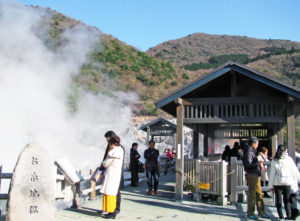 |
Unzen jigoku is a tourist spot in Unzen.
Jigoku, means Hell, is the number one attraction of Unzen with a peculiar smell of sulfur
emitted from the springs, and boiled hot water and white smoke rising from the ground
over a wide area. This is a striking reminder that Unzen Volcano is still very much alive.
Japan’s first Seminary
In 1579, Priest Alessandro Valignano of Jesus from Portugal came to Japan to inspect
the situatin of missionary work in Japan.
Valignano believed that training Japanese priests and monks was the key to the success
of missionary work in Japan.
And then, he made the Japan’s first Seminary in Shimabara peninsula in 1580, where was
the Hinoe Castle town of Arima Harunobu.
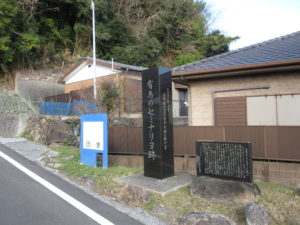 |
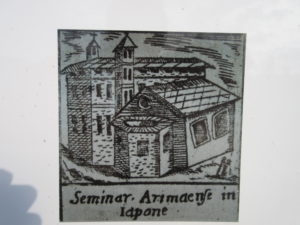 |
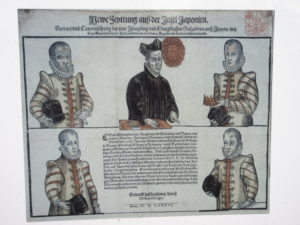 |
Among the first students, included member of Tensho youth mission to Europe who were
Ito Mansho Ito, Chijiwa Miguel, Hara Martino and Nakaura Julian.
Note : Seminary is an educational institution established in Japan by the Society of Jesus
between 1580 and 1614 to train Jesuit priests and monks.
Hidden Christian site, Kasuga Village
Kasuga Village and Mount Yasugatake is a Christian Pilgrimage site and is registered on
the World Heritage as Hidden Christian Sites in the Nagasaki Region.
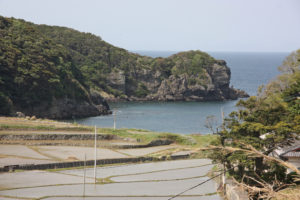 |
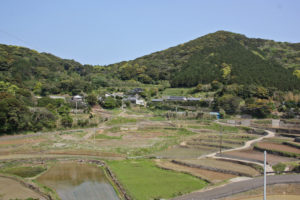 |
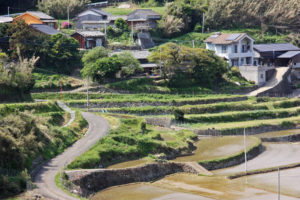 |
This idyllic, remote village was refuge to a small community of Hidden Christians who
practiced here for centuries, far from the prying eyes of the government. After the ban on
Christianity was lifted, the local villagers decided to continue practicing their own unique
brand of the religion rather than rejoin the Catholic Church. As a result, churches were not
erected in the village, and the religion remains outwardly invisible.

